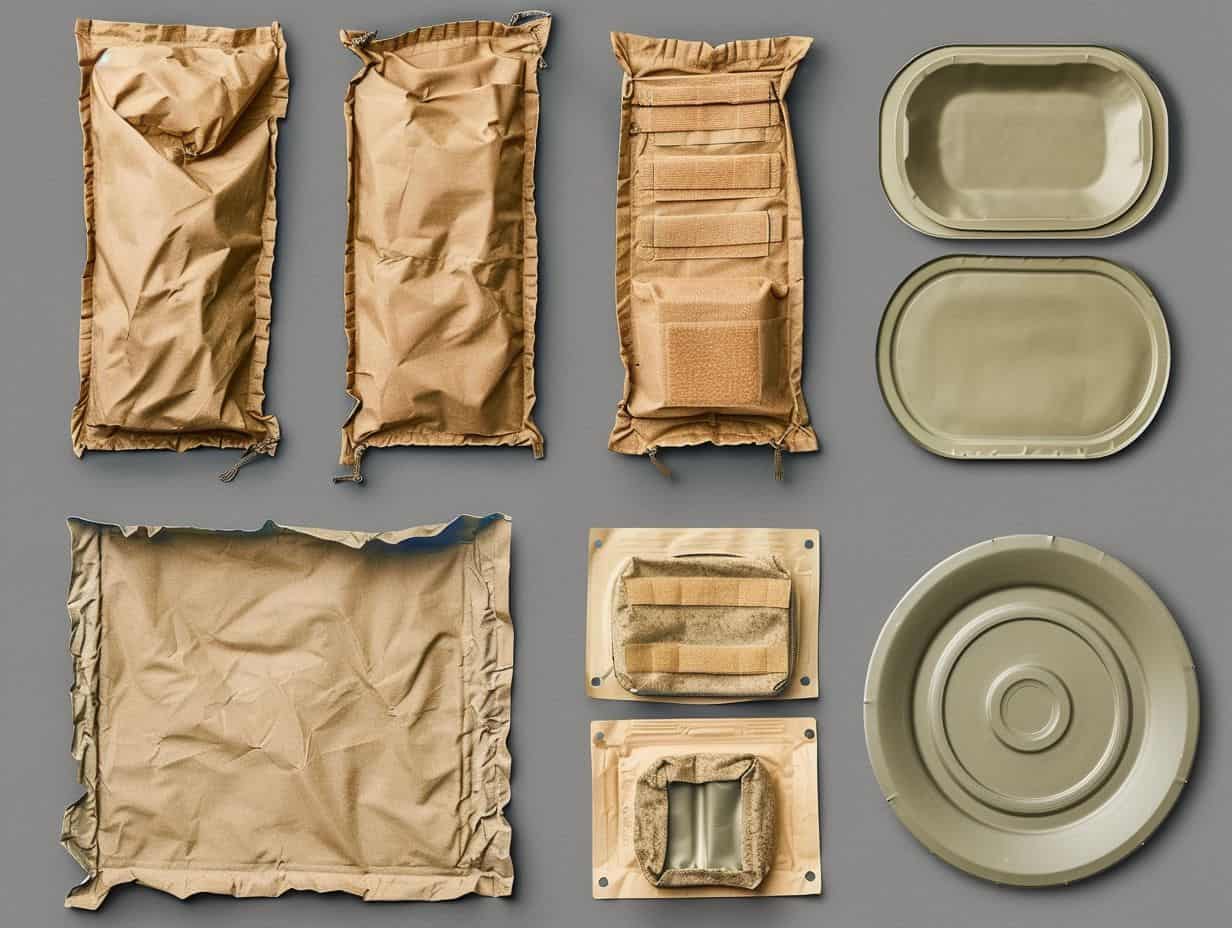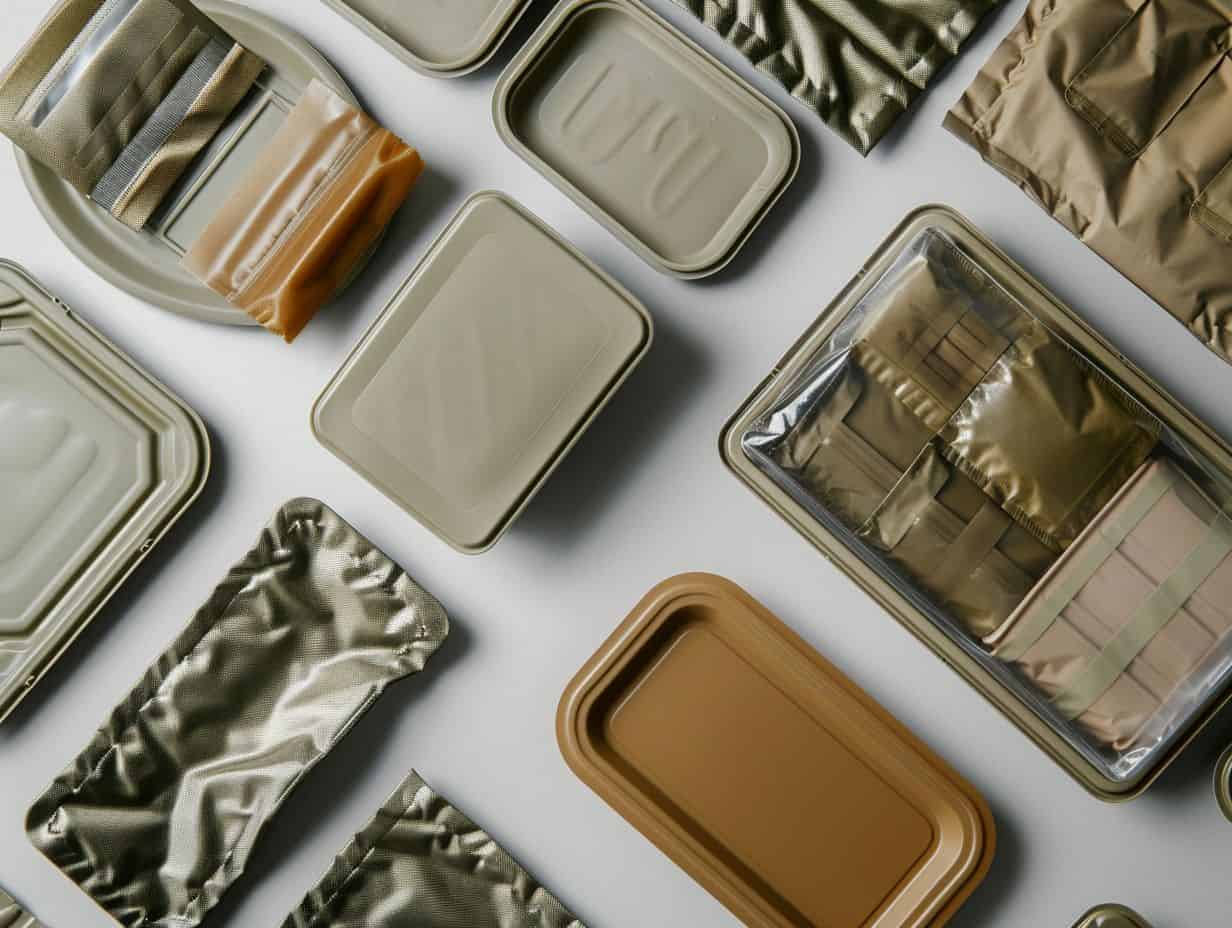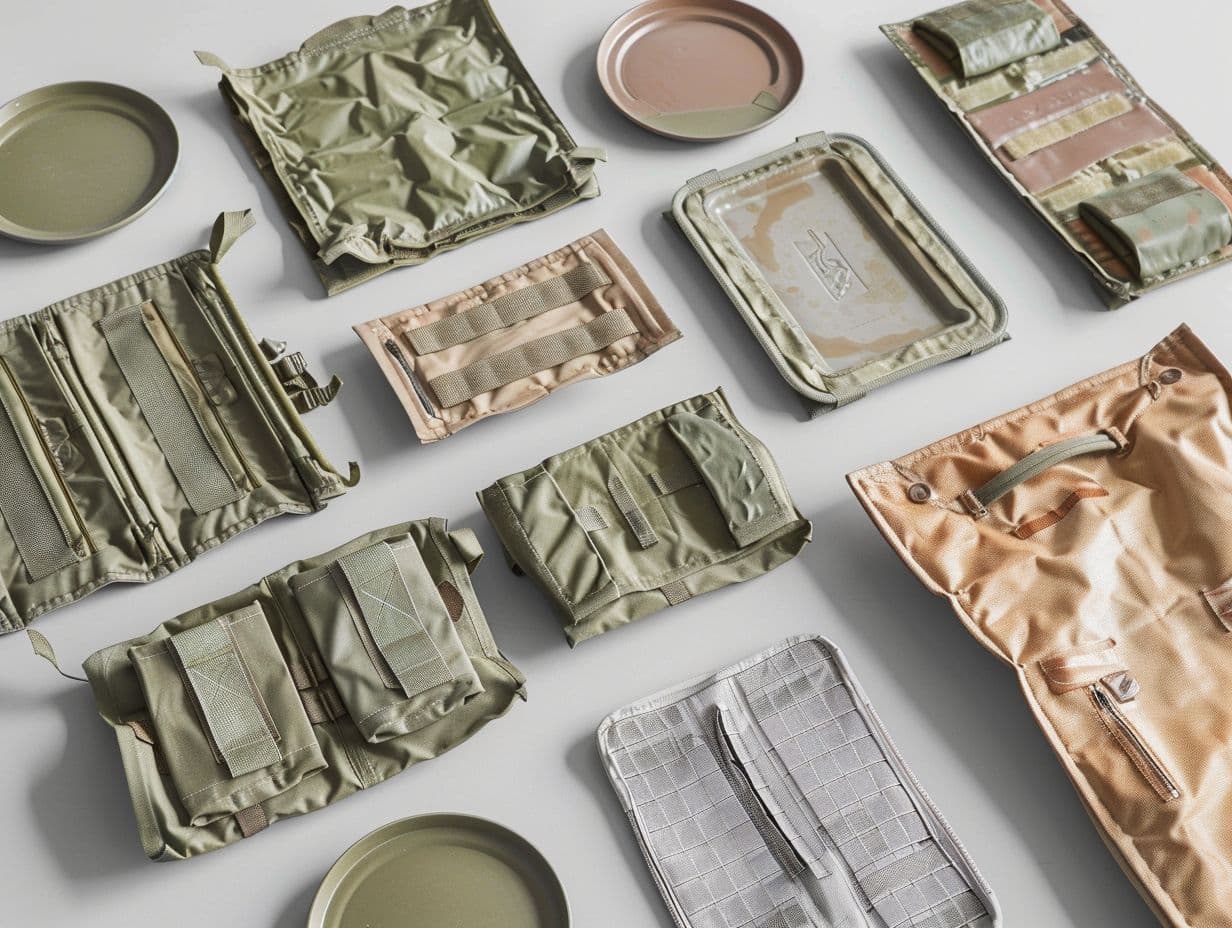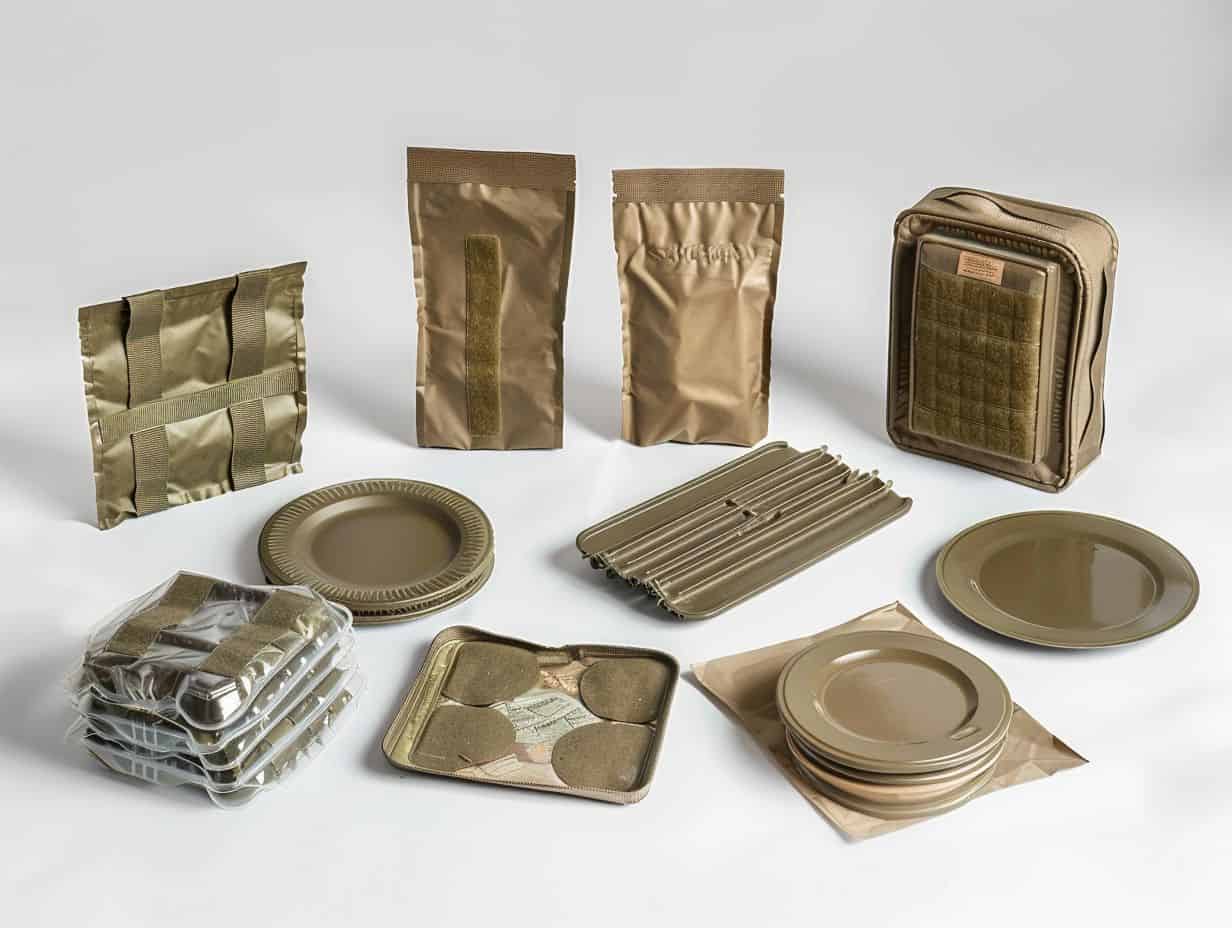Packaging plays a crucial role in the world of Meals Ready-to-Eat (MREs), ensuring that these essential food supplies remain portable, durable, and nutritionally sound.
The challenges and considerations involved in designing MRE packaging, including factors like portability, durability, and shelf life, are explored.
The evolution of MRE packaging over time, from its early beginnings to modern innovations, is also discussed.
Future trends, such as the use of sustainable materials and technology integration, are delved into, shaping the future of MRE packaging design.
Why is Packaging Important for MREs?
The packaging of Military Ready-to-Eat (MRE) meals is essential for their success. It ensures the preservation and long shelf life of the meals, as well as making them portable and convenient for military personnel in the field.
Effective packaging design for MREs goes beyond containment; it must also be durable to withstand harsh conditions, lightweight for easy transportation, and provide user-friendly access to the meals. The design should take into account factors like moisture resistance, temperature control, and the ability to maintain freshness and nutritional value.
For military users, well-designed packaging is not just about convenience; it can also impact their operational efficiency and overall well-being during missions. Therefore, the importance of packaging design in MREs is significant in the realm of military operations.
What are the Challenges of Designing MRE Packaging?
Designing MRE packaging presents various challenges, particularly in considerations such as lightweight construction, durability in harsh field conditions, compactness for storage and transportation, and the effective preservation of food contents.
One of the primary challenges in MRE packaging design involves striking a balance between durability and weight. This balance ensures that the packaging can endure rough handling without unnecessary bulk.
Material selection is critical to maintaining the freshness and safety of the food, especially in challenging environments. The packaging design should also focus on maximizing space efficiency for the storage and transportation of field rations while ensuring protection and convenience for the end user.
What are the Key Considerations for MRE Packaging Design?
Important factors to consider for MRE packaging design include functionality, user-friendliness, sustainability, ease of portability in different conditions, provision of portable meals, maintenance of nutrition, and achieving shelf-stable packaging solutions.
When designing MRE packaging, the focus should be on user convenience and ensuring that the packaging is easy to transport, especially in challenging environments. The design should aim to provide a complete and balanced meal that remains fresh and nutritious over time. By incorporating sustainable materials and practices in the packaging design, manufacturers can decrease environmental impact and support eco-friendly initiatives. The objective is to create packaging that meets the nutritional needs of consumers while also reducing waste and promoting long-term sustainability in the food industry.
1. Portability
Portability plays a key role in MRE packaging design, focusing on creating compact, lightweight solutions that are easy to transport for military personnel in the field. Prioritizing portability in MRE packaging design allows manufacturers to guarantee that these meals are convenient and practical for soldiers on-the-go.
The compact and lightweight characteristics of the packaging not only facilitate the transportation of meals during missions but also aid in maximizing storage space in their gear. Designing MRE packaging with portability in mind also involves taking into account factors such as durability and ease of opening, ensuring that the meals remain fresh and accessible even in challenging or unpredictable conditions.
2. Durability
Durability is an important factor in MRE packaging design to ensure that the packaging can endure the demands of field conditions and offer reusable options as needed.
This focus on durability is essential because MREs are frequently required to be transported and stored in harsh environments, including extreme temperatures, rough handling, and exposure to moisture. By employing advanced sealing technologies, packaging designers can develop solutions that keep the contents secure and fresh even in these conditions.
The incorporation of reusable packaging choices not only improves durability but also aids in reducing waste and enhancing sustainability in military operations.
3. Shelf Life
It is important to consider an extended shelf life in MRE packaging design to ensure food preservation, facilitate efficient food logistics, and offer shelf-stable solutions for military operations.
The importance of shelf life in MRE packaging design is not only about maintaining food safety but also about maximizing storage efficiency and minimizing waste in military operations. By integrating shelf-stable features into the packaging, military personnel can depend on these meals for extended durations without the concern of spoilage. This methodical approach to food preservation not only improves logistical effectiveness but also supports the readiness and sustainability of troops in the field.
4. Weight and Size

The management of weight and size in MRE packaging is important, requiring considerations for lightweight and compact design to improve portability and usability in various field conditions. Efficient packaging design is critical as it directly affects the ease of transportation and storage during military operations or outdoor activities.
By utilizing lightweight construction materials and minimizing unnecessary bulk, designers can develop MRE packages that are simpler to carry and store, enhancing the overall functionality of these vital supplies in challenging situations. The capacity to pack more supplies in a smaller space not only enhances logistical efficiency but also ensures that soldiers and field personnel can transport essential provisions without being encumbered by excessive weight or volume.
5. Ease of Opening and Re-sealing
In MRE design, it is essential to create packaging that allows for easy opening and re-sealing to ensure user-friendliness and functionality. This necessitates the implementation of innovative packaging solutions that cater to these specific needs.
The focus on easy accessibility holds particular importance in environments where individuals may face challenges or high-stress situations, such as during outdoor activities or emergency responses. By integrating user-friendly features like tear-notches, zip locks, or peel-and-seal closures, manufacturers can significantly improve the overall usability of MRE packaging. These inventive packaging solutions not only facilitate quick access to meals for users but also aid in preserving the remaining contents for future consumption. This approach reduces waste and helps maintain the freshness of the stored items.
6. Temperature and Environmental Resistance
Taking into account temperature and environmental resistance in MRE packaging design is essential, necessitating innovative and sustainable solutions that can withstand a variety of field conditions.
Considering the different climates and scenarios where military personnel might be deployed, the packaging needs to withstand extremes of heat, cold, humidity, and rough handling. Advances in packaging materials, such as cutting-edge barrier coatings and recyclable composites, have played a key role in improving durability while minimizing environmental impact.
Sustainable design strategies, like utilizing biodegradable materials and reducing excess packaging, not only help in creating a more environmentally friendly footprint but also ensure that the packaging remains effective throughout the supply chain and in challenging operational settings.
7. Nutritional Information and Serving Size
It is crucial to include accurate nutritional information and appropriate serving sizes in MRE packaging design to meet the nutritional needs of military personnel and ensure the effectiveness of meal solutions in the field.
By providing details such as calorie count, macronutrient breakdown, and allergen information on MRE packaging, soldiers are give the power toed to make informed dietary choices that align with their training and operational requirements. Considering serving size is essential to prevent overconsumption or undernourishment during deployment.
The design of packaging also influences the convenience and ease of meal preparation in various environments, assisting troops in maintaining energy levels and overall well-being during demanding missions.
How Have MRE Packaging Design Evolved Over Time?
The evolution of MRE packaging design has seen significant developments, driven by advancements in military meal solutions and product development to meet the changing needs of military operations.
Over time, there has been a focus on improving the functionality and durability of MRE packaging. This has led to the incorporation of features like tear notches for easy opening, resealable closures to maintain freshness, and compact designs for efficient use of space. Additionally, the use of materials such as lightweight yet robust plastics and laminates has transformed the strength and preservation capabilities of MRE packaging. These trends underscore the importance of adaptability and convenience in addressing the evolving requirements of modern military missions.
1. Early MRE Packaging
In the early stages, MRE packaging primarily focused on basic functionality and durability to support essential meal preparation in military settings, with an emphasis on quality control measures for food preservation.
The design of early MRE packaging centered around the practicalities of military life, ensuring that soldiers could have access to nourishing meals under any conditions. Key considerations included ease of transport, resistance to environmental factors, and protection of the contents from spoilage. Quality control processes were meticulously implemented to guarantee that the food inside remained safe and suitable for consumption, even after extended periods of storage or exposure to varying temperatures. This attention to detail in packaging design played a crucial role in maintaining the effectiveness and reliability of military rations.
2. Modern MRE Packaging

Modern MRE packaging has been updated to include new design elements that improve functionality and offer a variety of meal options for military personnel. These changes represent a trend towards more effective and user-friendly packaging solutions.
These improvements in packaging design aim to enhance the durability and shelf life of the meals while also emphasizing the importance of compactness and portability. One significant development is the introduction of resealable pouches, which enable soldiers to enjoy their meals in multiple sittings, eliminating the need to finish everything at once. Additionally, modern MRE packaging now features tearable elements that allow for easy access to the contents without requiring additional tools, simplifying meal consumption in challenging environments.
3. Innovations in MRE Packaging
Advancements in MRE packaging have had a significant impact on the industry. Improvements in sealing technology and packaging solutions have driven changes in packaging design to align with the requirements of modern military logistics and operations. These developments in packaging technology have boosted the durability and shelf life of MREs while also enhancing their portability and usability across different operational settings.
The adoption of advanced sealing methods has notably decreased the chances of contamination and spoilage, guaranteeing that military personnel can rely on secure and nutritious rations during crucial missions. Consequently, these innovative trends in packaging design are not only influencing the packaging of MREs but also establishing new benchmarks for effectiveness and functionality in military food supply chains.
What Are the Future Trends in MRE Packaging Design?
Future trends in MRE packaging design are expected to incorporate sustainability, advanced technologies, and an emphasis on enhancing the nutritional value of meals to align with the changing requirements of military personnel.
This shift towards sustainable practices in MRE packaging design is motivated by the growing recognition of environmental impact. Manufacturers are investigating biodegradable materials, environmentally friendly packaging solutions, and efficient production processes to minimize waste.
The integration of advanced technologies like smart packaging with sensors for monitoring freshness and temperature control is transforming the packaging and delivery of MREs. The focus on enhancing the nutritional content of MREs is driving the creation of healthier meal choices, including a balanced combination of proteins, carbohydrates, and vitamins to address the nutritional needs of military users.
1. Sustainable Materials
The future of MRE packaging design is likely to incorporate sustainable materials that promote environmental responsibility and drive packaging innovation towards eco-friendly solutions. Integrating sustainable packaging materials into MRE packaging design is crucial in advancing the packaging industry towards a more sustainable and eco-conscious future.
By embracing materials like biodegradable plastics, compostable fibers, and recycled content, companies are not only reducing their carbon footprint but also contributing to the global sustainability movement. The shift towards sustainable packaging aligns with the growing consumer demand for environmentally friendly products, pushing brands to prioritize the use of renewable resources and minimize environmental impact.
This shift not only benefits the environment but also fosters a culture of innovation and responsible production in the packaging sector.
2. Personalization and Customization
Personalization and customization are expected to have a significant impact on future MRE packaging design, catering to a variety of consumer preferences and facilitating targeted marketing strategies for meal solutions. The changing landscape of food packaging is adopting the trend of personalization to provide unique experiences for users.
By adapting packaging designs to match individual tastes and preferences, companies can effectively engage consumers on a more personal level. This shift towards customized packaging not only aligns with the increasing demand for distinct product experiences but also creates new opportunities for targeted marketing initiatives.
For military users, personalized MRE packaging can improve the overall attractiveness of meal solutions, ensuring that each package meets their specific requirements and preferences.
3. Technology Integration
The advancement of technology is expected to bring about changes in MRE packaging design, focusing on the incorporation of cutting-edge sealing technology and packaging solutions that take advantage of developments in food technology.
This technological integration represents a significant shift towards improving the durability, safety, and convenience of MRE packaging. By introducing sophisticated sealing mechanisms and innovative packaging materials, the future of MRE packaging is positioned for enhancement and sustainability.
These developments not only guarantee the preservation of food quality and freshness but also cater to changing consumer preferences for portable and easily accessible meals. As technology progresses, the combination of sealing technology and food packaging in MREs is likely to transform the industry and establish new benchmarks for efficiency and effectiveness.
4. Improved Nutritional Value

Enhancing the nutritional value of MREs through innovative packaging design is a key focus for the future, requiring stringent quality control measures and continuous product development efforts to optimize the nutritional content of military meals.
By consistently monitoring the nutritional profiles of ingredients and refining the formulation process, the military aims to provide balanced and nutrient-rich meals that align with the evolving dietary needs of service members. Incorporating advanced food technologies and conducting thorough research, the goal is to ensure that each MRE not only sustains but also nourishes personnel in demanding operational environments. This commitment to enhancing nutritional quality underscores the dedication to prioritize the health and well-being of those serving in the armed forces.
Frequently Asked Questions
1. What is the purpose of designing MRE packaging for portability and convenience?
The purpose of designing MRE packaging for portability and convenience is to create a meal that is easy to transport and can be quickly prepared, making it ideal for military personnel, outdoor enthusiasts, and emergency situations.
2. What are some key factors to consider when designing MRE packaging?
Some key factors to consider when designing MRE packaging include weight and size, durability, shelf life, and ease of opening and resealing.
3. How does MRE packaging ensure the food remains fresh and safe to eat?
MRE packaging uses advanced technology such as retort pouches and vacuum sealing to remove oxygen and create a sterile environment that preserves the food and prevents bacterial growth.
4. Can MRE packaging be easily opened and resealed in the field?
Yes, MRE packaging is designed to be opened and resealed without any additional tools or equipment. This makes it convenient for military personnel and outdoor enthusiasts who may not have access to traditional kitchen tools.
5. What type of materials are used to make MRE packaging?
MRE packaging is typically made from durable materials such as laminated plastic, foil, and polyethylene. These materials provide protection from moisture, light, and physical damage.
6. How does MRE packaging contribute to reducing waste?
MRE packaging is designed to be lightweight and compact, reducing the amount of waste produced compared to traditional meal packaging. Additionally, the packaging materials are often recyclable, further reducing the impact on the environment.


